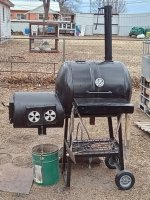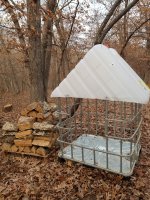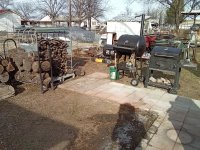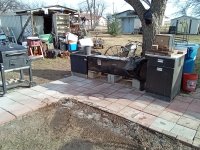Build up is termed slag. You're always going to have some slag, pro, or novice. Yes, it can be used to disguise poor welding. You go grind your slag off and see pits and holes from burn through, delam and simply no joining. "Ah but it was 'welded'." *shm*
Yes you are better far than the jokers. You're reading constructive suggestion as just that, "hey, you might try this to get a little better."
I wish years ago we would have gotten placed to the union guild apprenticeship program for welding. As said I was at least fair to middlin' at it. We got told though after each of us had put in $3K for tuition the school lacked funding to get us into apprenticeships.
We knew even then bull was being slung & looking back now I realize how deep, get the more irked. Then, realize that was out of my control then, past is dead too. So have to try starting over again in something. Kind of thought better of welding. At times you need a nose to smell gasses before, ... . So, I'll work something a bit safer.
*chuckles* I remember my Big Bro from United Way's big brother's program. His actual younger brother was called Boogey. Well, Boogey took me out into the car shop where he was working. He put me in one pit. "Cut off the exhaust from in front of the muffler. I'll slap a new one one in the next pit. We'll run this all day & make a killing."
I wasn't any more than 12 or 13 at the time. He taught me to slap mufflers on too. We would swap pits during the day. It drove my "big bro" nuts me and Boogey got on like that. This is where I learned you can weld with a cutting torch on an oxy-cety (oxygen & acetylene) kit.
Am figuring it looks something akin to
this.
Know I said any ape before. Yeah admit that sounds a put down. To some that fits too. I see though you're not any kind of ape at all. What you need to watch with MIG/Flux Core is that you get your CO2/Argon/(Insert your inert gas choice here) feed right.
Too much and you'll heat slow as the gas "cup" surround the flux will disperse too far. The flux won't "hold the fire" so to speak.
Too little and it burns right through because the cup is holding too close, concentrating the heat in a point. The flux will be a nuclear core ready to melt down.
And by cup not talking the cup on the tip of the "gun". The gas cup forms in the air to hold pressure around the flux and weld. You might not see it but its there and it "shields" the welding process from just plain old air and air pressure. It acts like the sheathing on electrodes (sticks) used for "stick" welding.
Then, it's applying the same with a torch. Watch your material if your gas is right. Let it follow the heat, slow, gentle and let the two materials get married up with the flux being the preacher.
Don't be afraid of slag if once you grind it away you start seeing the braided puddle line (bead) for a weld. That braiding is what tells the tale, if you got it then you got union of two materials as one.
*ducks, dodges all kinds of attacks from union tradesmen, old salts for making it too simple and writing it out*
Don't let my simple scribbling fool you though. There is a lot more complexity to some more advanced stuff, especially industrial or commercial work. You got to understand blueprint reading, do trigonometric formulas to see how much X material is needed to make a container Z by R by F dimensions while still maintaining PSI of T for Product L at U altitude under G conditions.*smh*
When our instructor told us we were doing trigonometry I lost it. He chuckled and grinned, "learned something despite yourself, huh?"



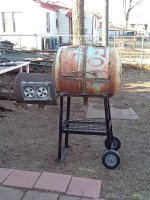
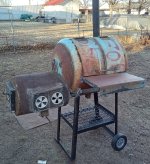
 Congrats!!!!
Congrats!!!!